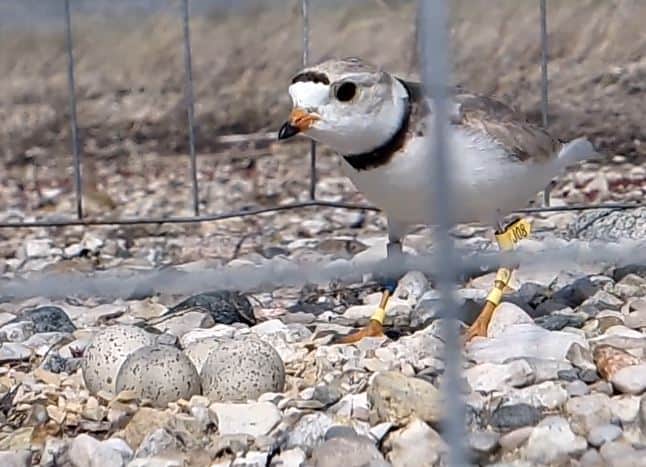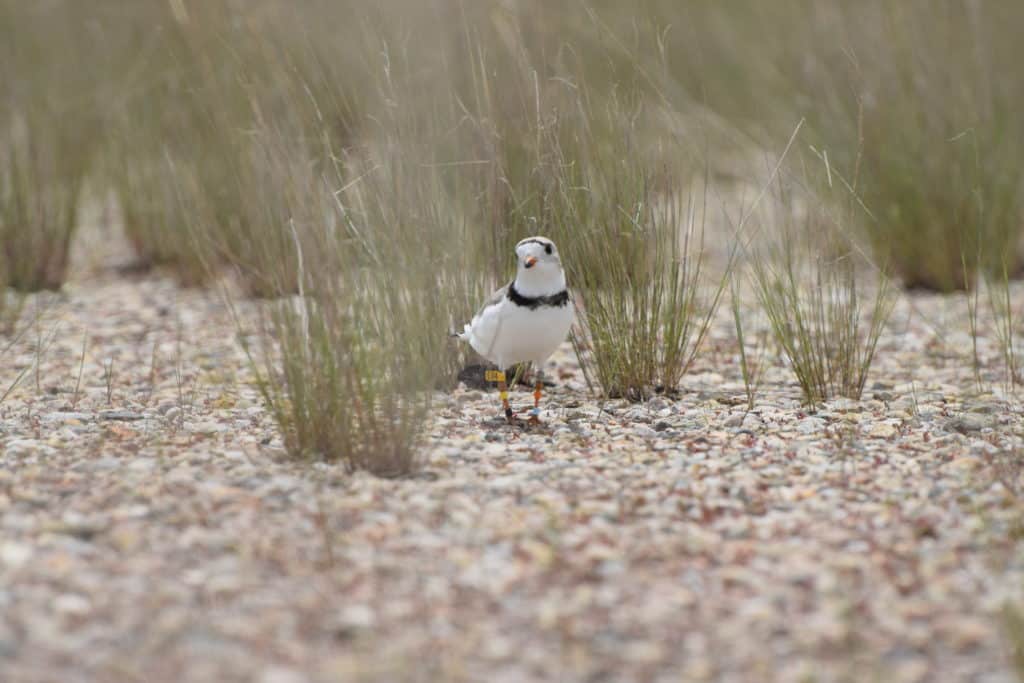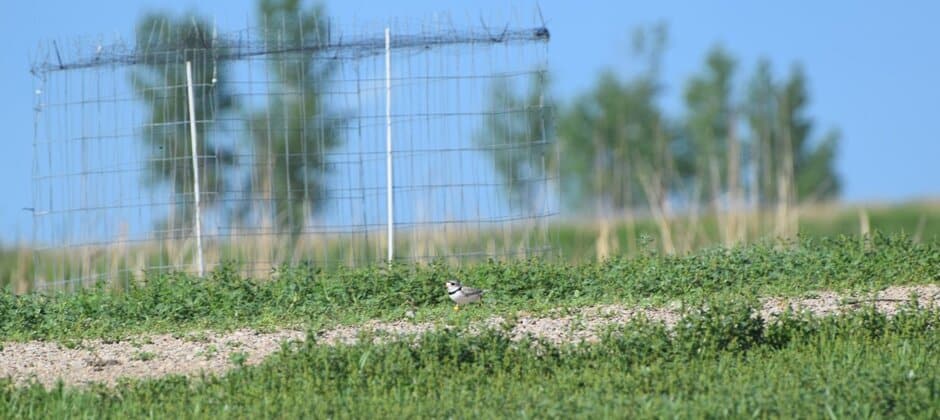Share this article
JWM: Nest cages boost piping plover survival
Placing cages around piping plover nests helps boost bird populations by keeping predators away from young chicks and eggs.
But some wildlife managers had found dead adult plovers around these cages and worried that they may somehow be causing problems rather than protecting the species as intended.
“Adult mortality could have a pretty profound effect and wash out any positive effect they might have on increasing recruitment,” said Michael Anteau, a research wildlife biologist with the U.S. Geological Survey.
Piping plovers (Charadrius melodus) were listed as federally endangered by the U.S. Fish and Wildlife Service in 1985. The birds prefer to nest on sandbanks created by the shifting paths of rivers that run their natural course. But managers have tried to control the hydrological cycle of many waterways, leading to loss of good nesting habitat for the small shorebird. Nest predation by native and invasive species can also cause challenges for these birds, so wildlife managers have turned to placing cages over nests that allow the adults access but exclude predators like crows, gulls, raccoons (Procyon lotor), skunks, coyotes (Canis latrans) and foxes.

An adult plover watches over its eggs inside the cover of a nest cage. Credit: U.S. Geological Survey
Anteau led a study published recently in the Journal of Wildlife Management in which he and his colleagues conducted an experiment around the Prairie Pothole Region wetlands of North Dakota and Montana to find out if the cages were causing any damage. They had more than two dozen study areas each year, split between ones without cages, and ones with cages over half the nests.
When they compared survival between the various areas, the researchers found that “cages did improve nest survival,” Anteau said.
They found no evidence that nest cages were leading to adult plover deaths. So why were managers finding dead adult plovers by some of these cages? Anteau speculated the reason is predation. Raptors may capture plovers elsewhere and bring them to the caged nests to consume them, using the cages as perches. This would make sense because the areas are relatively flat without many trees or other potential perches—the cages may be a good place for birds of prey to stop and eat.

Piping plovers are considered endangered in many parts of their range. Credit: U.S. Geological Survey
Wildlife managers were also concerned that the nest cages might be artificially bolstering plover chick density, which could in turn result in elevated competition and mortality rates. But their results didn’t show this either. Finally, a concern that nest cages might be attracting predators that then overharvest uncaged nests nearby also held no water in their study.
Overall, the experiments showed that the cages improved nest success and didn’t have any side effects on the survival of chicks or adults, making it a viable management tool for conservation of piping plovers.
This article features research that was published in a TWS peer-reviewed journal. Individual online access to all TWS journal articles is a benefit of membership. Join TWS now to read the latest in wildlife research.
Header Image: A piping plover near a nest cage. Credit: U.S. Geological Survey








